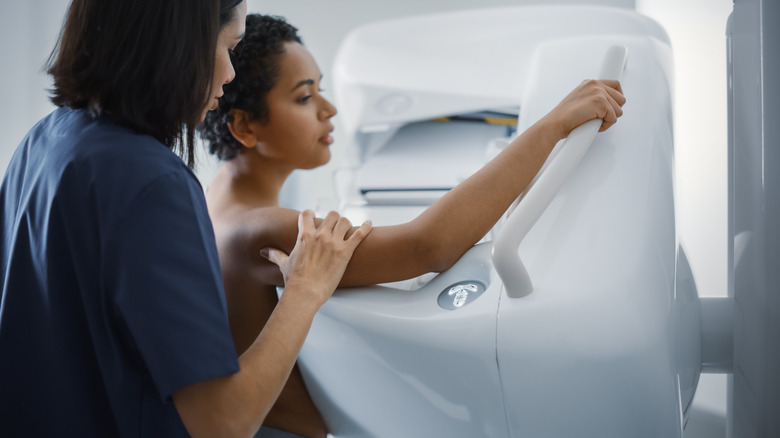Can Measuring Salt Levels In Breast Tumors Help Determine Cancer Severity?
Breast cancer is the second most common cancer in women in the U.S., after skin cancer (via American Cancer Society). In fact, 1 out of every 3 new cases of female cancer is breast cancer. The median age of diagnosis is 62, but it's common in middle-aged women, too. The average person has about a 1 in 8 chance of developing breast cancer, although there are other risk factors such as gene mutations, having a first-degree relative with breast cancer, being African American, and having dense breast tissue.
Perhaps the most devastating truth about cancer is that there's still no cure for it, and that's despite decades of research. In the meantime, the best way to manage your risk of cancer is to properly screen for it. Screening is the best way to catch cancer early, which can increase your ability to treat it. Breast cancer is one type of cancer in particular that requires regular mammogram screenings for women — and now, scientists may have discovered a new way of identifying it.
How sodium can help to identify cancer in breast tumors
A new study published in the British Journal of Cancer may have discovered a new way to identify breast cancer, determine its severity, and treat it. Scientists examined breast cancer tumors in mice using two different types of imaging, sodium magnetic resonance imaging (MRI), and diffusion-weighted imaging (DWI). They found that when compared to non-cancerous regions, the cancerous tumors contained elevated levels of sodium. The tumors were then treated with a type of chemotherapy called docetaxel, which was effective in decreasing them.
This non-invasive technique can make it easier to classify tumors and also monitor the response to treatment (via Medical News Today). Study author Dr. William J. Brackenbury explained that sodium may be a helpful biomarker in response to treatment. While the study is promising, more research is needed to determine if this procedure can be recommended. Since the study was conducted on mice, further research is needed on humans.


